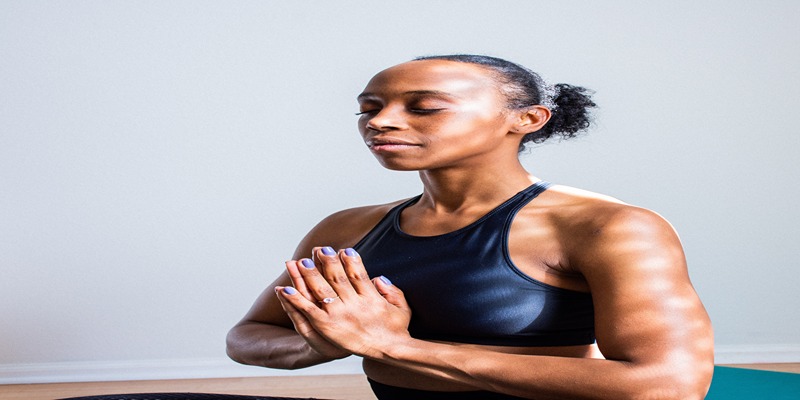Harnessing the Potent Advantages of Deep Breathing Techniques
Nov 08, 2023 By Madison Evans
Take a long, calm breath in, and let it out. If you're feeling lighter after reading this, it's not all in your head. Both wellness therapists and yoga teachers recommend deep inhalation for the many advantages it provides for mental health in addition to the physical health benefits already mentioned.
We breathe in and out over eight million times a year, so why is it that a full breath often seems elusive? When do we take a deep breath? Learn the benefits of deep inhalation exercises and how to do them effectively.

Breathwork Benefits
The assumption that deep breathing techniques may reduce symptoms and help manage sickness in clinical groups is supported by a wealth of studies. These techniques also play an important role in enhancing health and well-being among the robust. Both empirical statistics and subjective accounts confirm deep breathing's ability to alleviate psychological and physical stress, and hence its effectiveness in lowering blood pressure.
The general population and individuals diagnosed with anxiety and depression may benefit from these breathing strategies. Treatments for asthma and TB may benefit from the use of deep breathing techniques, and so may attempts to kick the habit of smoking. These techniques, when combined with conventional medicine, may improve the quality of life for diabetics and help control sympathetic nervous system activity. Deep breathing exercises may help patients enduring cancer treatments like chemotherapy or radiation with fatigue management, quality of life, sleep, and anxiety.
The Efficacy of Deep Breathing Explained
One may doubt how something as basic as breathing can carry such an effect. The parasympathetic nerve system, sometimes known as the "rest and digest" mechanism, helps the body preserve energy for internal processes like digestion and waste disposal when triggered by slow, deep breathing.
As the supervisor of the parasympathetic system, which controls things like mood, digestion, and heart rate, deep breathing also benefits the vagus nerve. It also makes sure the brain and other organs get enough oxygen.
Take stock of how you feel before beginning a deep breathing routine. After the workout, measure any changes in feeling or well-being.
Mastery of Deep Inhalation Techniques
Abdominal Breathing
This classic method of calming down is useful when you need some peace and quiet or relief from stress.
Put yourself in a relaxing position, whether that's sitting up or lying down.
Put one hand on your chest and the other on your stomach, just where the ribs meet.
Slowly inhale through your nose and expand your stomach as you do so. Your chest shouldn't be doing a lot of moving about.
Make the motion of blowing out a candle with your lips as you exhale. When you exhale, your hand on your stomach should go downward.
Repeat this process 3–10 times, savouring the fullness of each breath.
After completing this program, you should evaluate your progress. Can you identify any changes?
Conscious Diaphragmatic Breathing
Improve your breathing by focusing on your body's reaction to stress or anxiety. This practice may be important in locating opportunities to actively slow your breathing and bring about calm. Get comfortable first by sitting or lying down. Close your eyes and concentrate on your breathing for a few minutes. Take note of the length and depth of the breath. How long are the breaths, and how deep are they? If you want to feel more relaxed, try breathing normally and deeply.
Rhythmic Respiration
Counting your breaths is a great way to maintain a healthy respiratory tempo and may serve as a meditative anchor. This practice trains us to breathe more deeply and expansively. Here are some alternatives to think about:
Inhale your tongue against the palate. Inhale through the nose and count to five, then back out. Hold your breath at the base of your tongue for a count of eight as you exhale. Repeat this process until your lungs are completely emptied, and you feel at ease with your breathing.
The "4-7-8 breathing" approach mirrors the earlier. Take a deep breath in for four beats, hold it for seven beats, then let it out for eight beats. Because of the interval that occurs between breaths, one is able to calm down and take it easy.

Visualization Breathing
This technique, also known as imagined breathing or balloon breathing, begins with finding a comfortable, upright position in which to close one's eyes. Take a few deep, nasal breaths, and then exhale completely through your mouth. Visualize a balloon being inflated in your stomach as you take a deep breath in. Imagine the balloon slowly collapsing with each breath you take out. There's no need to be in a hurry to get off the plane.
Imagine the balloon, painted in a colour or pattern that appeals to you, floating upward as you take a deep breath. The purpose of this approach is to train one to breathe deeply from the diaphragm rather than the chest, cutting down on shallow breathing and tension in the process.
Guidance and Techniques
Several approaches to deepen your breathing exercises are provided here:
Setting a timer may seem silly when all you need to do is breathe, but doing so often is essential for receiving the advantages of this exercise.
Instead of reaching for your phone as soon as you wake up, try doing a few rounds of these breath-centred exercises.
Learn to breathe properly during times of peace and quiet. Because of your practice, you'll be able to put these strategies to good use under real pressure. It's crucial to master these methods in an atmosphere of peace rather than chaos.
One of the best things about breathing exercises for stress relief is that they are so unobtrusive.
Think forward to stressful situations, like waiting in line at the grocery store or being stuck in a traffic jam. Once you've mastered the technique of deep breathing, take a minute to let that oxygen soak into your brain before engaging in any potentially heated exchange.
Conclusion
We uncovered the strategies and advantages of deep breathing and discussed their enormous effect on one's emotional and physical health. Stress may be reduced and health can be improved by learning to breathe properly, and there are many ways to do this. All of life's unavoidable stresses may be handled with the help of these techniques, which are meant to be incorporated into your routine without drawing attention to themselves. If you can master these techniques, you'll have a ready source of calm no matter how your day's pressures fluctuate.








